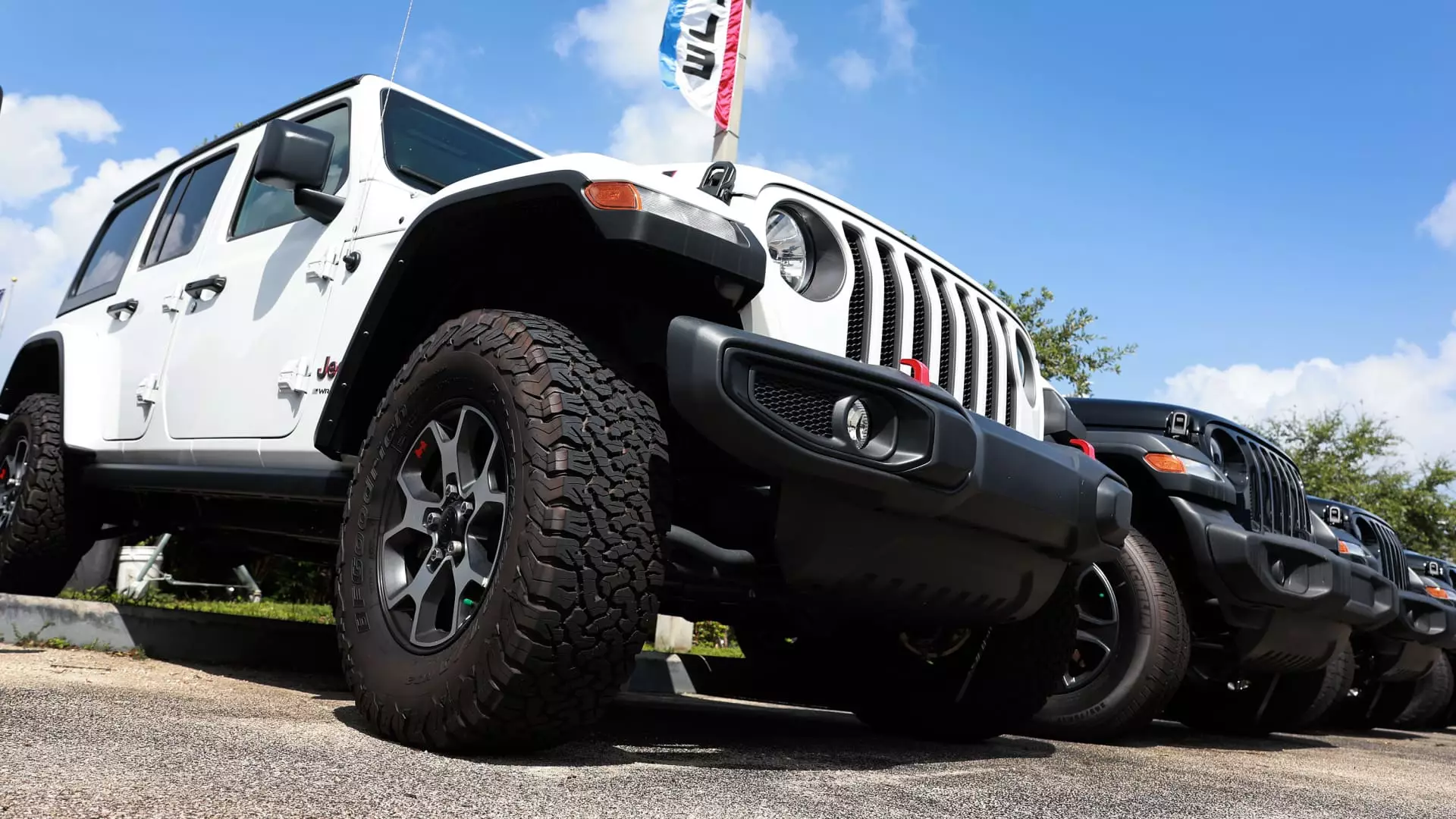The U.S. automotive landscape is undergoing a significant transformation as it grapples with fluctuating sales figures, economic instability, and shifting consumer preferences. Recent projections suggest that new vehicle sales will likely decline by approximately 2% in the third quarter of 2024, totaling around 3.9 million vehicles sold. This forecast, provided by industry analysts from Cox Automotive and Edmunds, signifies a troubling downward trend—marking a further 5% decrease relative to the preceding quarter. As prevailing economic and political uncertainties loom large, the automotive industry teeters on the brink, facing myriad challenges including high interest rates and soaring vehicle prices that hinder consumer purchasing power.
One critical factor influencing the automotive market is the fluctuation of interest rates. While recent decisions by the Federal Reserve to reduce rates have shown potential as a remedy for the shaky economy, analysts emphasize that this may not significantly spur vehicle sales. “2024 has been a volatile year for the new vehicle market, and more of the same is expected in Q4,” warns Charlie Chesbrough, a senior economist at Cox Automotive. Affordability issues remain paramount; many potential buyers are finding themselves priced out of the new car market altogether. The burden of financing an average of $40,000 for a new vehicle creates an insurmountable barrier for many consumers, with questions surrounding who can realistically afford these new cars becoming central to the sales conversation.
Looking forward, both Cox and Edmunds anticipate a total of 15.7 million light-duty vehicle sales in the U.S. for 2024. This projection reflects Cox’s downgrading from an earlier forecast of 16 million, largely in reaction to ongoing market difficulties. While Honda and Ford are expected to show sales growth, manufacturers like Stellantis, Toyota, and BMW are forecasted to experience significant declines, with Stellantis potentially facing a jaw-dropping 21% drop from last year. This shift in dynamics highlights a profound concern over the strategies employed by automakers, especially sectors like Stellantis that have been criticized for prioritizing profits over broader market appeal.
In the electric vehicle (EV) segment, a slower growth rate is anticipated, despite an estimated 8% increase in sales compared to last year. This growth is noteworthy, particularly as it occurs within a general environment of falling sales figures in traditional vehicles. Tesla, long a dominant player in the EV market, is projected to see its market share dip below 50% for the second consecutive quarter, illustrating an increasingly competitive landscape. The rise in EV sales is also reliant on robust incentives offered to consumers—further highlighting the difference in consumer experiences between purchasing traditional vehicles and EVs.
Incentives play a crucial role in consumer decision-making, especially in a high-interest environment where affordability remains an issue. The average transaction price for new EVs is expected to stabilize, with incentives expected to cover 13.3% of the average transaction price—more than 80% higher than those for traditional internal combustion vehicles. Leveraging these incentives, including the federal credit of up to $7,500 for qualifying EV buyers, becomes essential for manufacturers looking to stimulate sales amidst economic challenges. Notably, the disparity in incentives indicates a strategic shift toward promoting cleaner vehicles while traditional offerings struggle to keep pace.
The U.S. automotive market stands at a crossroads, facing significant challenges fueled by economic uncertainty, high interest rates, and escalating vehicle costs. While forecasts suggest a gradual improvement in affordability, the need for a more substantial recovery remains pressing. With rising EV sales supported by considerable incentives, automakers must find ways to innovate and adapt to the changing landscape. As industry players navigate these turbulent waters, a clearer understanding of consumer needs and strategic pricing will be vital for fostering a more sustainable market environment as we move forward into 2024.

